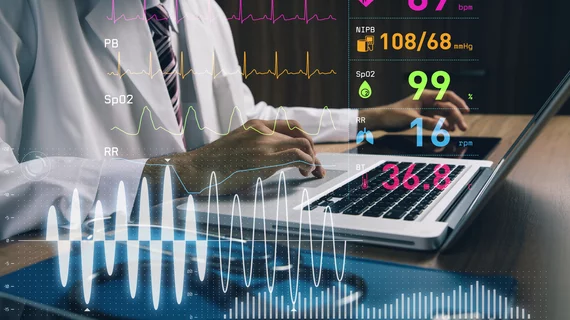Teleradiology has evolved from a potential threat to traditional imaging to an accepted practice improving patients’ access to care. Many departments now utilize some form of outside reads, but experts believe it has yet to reach its full potential.
The ongoing pandemic has only cemented teleradiology’s important role in radiologic care, allowing social distancing while also tackling volume surges, a group of six radiologists wrote Wednesday in AJR.
And in the current era of value-based care, utilizing remote reading will only grow more important.
Tarek N. Hanna, with Emory University School of Medicine’s Department of Radiology and Imaging Sciences, and colleagues highlighted a few challenges standing in the way of wider adoption.
Licensing and credentialing
Individual states oversee the licensure processes stipulating radiologists to be familiar with requirements for providing teleradiology services at both the transmitting and receiving sites. But given that many telerads work at multiple hospitals across state lines, the process can be challenging.
“These barriers result in practice inefficiencies and restricted access to emergent and subspecialty care, especially in rural markets,” Hanna et al. noted.
And while the Interstate Medical Licensure Compact has made it easier for physicians practicing in multiple states, a number of heavily populated states (Texas, California, New York and Florida) aren’t part of the pact, limiting its impact.
Regulations
Many states have established rules regulating components of diagnostic radiology workflow, which particularly hampers teleradiologists, the authors noted.
In New York, for example, diagnostic monitors for remote reading are subject to routine biweekly quality control testing, intensive quarterly evaluations, and annual testing by a licensed medical physicist. Unsurprisingly, some providers may be put off by the high costs and complexities required for at-home workstations, the authors noted. Washington and Minnesota are two states with less restrictive mandates.
“We support evidence-based regulation; standardization of regulation across geography; and regulation that does not result in disparities in the quality of, or access to, imaging care,” Hanna et al. explained. “Radiologists must stay engaged and use their (individual or collective) voices to influence regulatory legislation.”
Systems Integration and communication
Accessing all relevant clinical information is more difficult for teleradiologists because they typically interpret exams from many institutions operating on different PACS and electronic medical record systems. Efforts to reduce data-sharing barriers without compromising security are needed, with statewide teleradiology networks a possible solution.
Additionally, interpreting rads must oversee the clinician completing the imaging exam. And because they’re remote, such physicians must be more vigilant in ensuring quick and easy communication between themselves, technologists and the ordering provider. Virtual consults with instant messaging have proven successful, the authors explained.
After-hours staffing models and reimbursement issues
Night shifts provide access to emergency imaging exams during off-hours and have been a primary driver of teleradiology’s growth, the authors noted. But such hours lead to poor job satisfaction, making recruiting overnight providers notoriously difficult.
Additionally, while new clinical scheduling models have evolved to compensate for these non-traditional schedules, after-hours work is rarely included in Current Procedural Terminology codes. Clinical production for these rads, therefore, is often unfairly discounted.
“Radiologists should work with specialty societies to address such care discrepancies, understanding that this may involve more rigorous staffing (of both physicians and technologists) after-hours, and that such change may require both culture shifts and support from new reimbursement models,” Hanna and colleagues wrote.
The teleradiology market is only projected to keep growing, and shoring-up these issues can help ensure broader access to high-quality imaging across the country, the authors concluded.
Read more from the study, including upcoming opportunities in teleradiology, in the American Journal of Roentgenology here.

